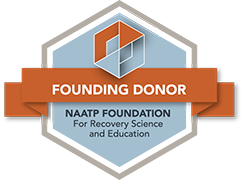5 Ways to Exercise When You Aren’t “In The Mood”
Regular exercise is one of the best things you can do for yourself in recovery. Numerous studies have supported the many benefits of exercise. It has been shown to increase activity in your prefrontal cortex, the part of your brain responsible for executive functions like planning, self-control, emotional regulation, concentration, and working memory. It has also been shown to increase the volume of your hippocampus, a part of the brain involved in turning short-term memories into long-term memories. The hippocampus has been found to shrink in people who struggled for a long time with depression or anxiety, and exercise appears to counter that effect. Exercise also increases your levels of serotonin, a neurotransmitter associated with feeling of wellbeing.
All of these effects together have been shown to lessen symptoms of depression and anxiety, which often affect people early in recovery. There have also been studies that showed regular aerobic exercise can directly reduce the risk of relapsing on cocaine. However, even if the benefits of exercise during recovery are clear, it’s not so easy to make exercise a regular part of your life. Here are some ways to get some exercise even when you really don’t feel like it.
Broaden your definition of exercise.
It’s easy to fall into the trap of thinking that exercise only means doing a few kinds of things. You might see people running in your neighborhood and think you should be running too. You might see a commercial with people sweating in a packed gym and think you have to do that as well. In reality, there are very few boxes you have to check in order to get the benefits of exercise. Basically, any activity that you do more or less continuously for at least 20 minutes is exercise- that could be walking the dog, raking leaves, playing a game of pickup basketball or soccer, or anything else that gets your heart rate up and makes you breathe a little harder. Bonus points for anything you do with friends because it adds a social dimension, which studies have shown will improve your mood even more.
Remember that anything is better than nothing.
One reason so many new year’s resolutions fail is that most people try too much too soon. They imagine some kind of Rocky training montage in which they go from out of shape to peak physical condition after two months of intense training. This might work for a week or two, but then that mountain gets too steep. Even doing a pretty manageable workout can seem like too much some days. When that happens, don’t fall into the all-or-nothing trap. If you’re supposed to run three miles and you know there’s no way that’s going to happen, go walk for 10 minutes instead. It might not be as good, but it’s better than nothing. It gets you moving, it improves your mood a bit, and it reinforces the habit of regular exercise.
Lower the barrier to starting.
Again, when you see people running in your neighborhood decked out in branded gear from head to foot, it’s easy to feel like you have to prepare a lot to start exercising. The same is true if you read too many exercise blogs that go on about the latest fitness trends. You get the idea that you have to buy a lot of stuff or do a lot of research before you can start getting in shape. It’s a good idea to learn some of the basics, but don’t overcomplicate things or use research as a way to procrastinate. You can start by just heading out the door, walking until you’re tired, then turning around and walking home.
Similarly, make it as easy as possible to do your daily exercise. There are many ways you can do this. You might want to have your clothes set out so you can change into them when you wake up or after you get home from work. You might want to find a gym close to your house so you don’t have to drive across town to exercise. Or you might decide to exercise at home, making it even hard to skip a workout. Look for the sticking points and do what you can to get rid of them.
Just do a little bit.
Exercise can be unpredictable: Some days you feel like you couldn’t possibly do your regular workout, but then you somehow find the motivation to get started and by the time you’re done, you’ve broken two personal records and you feel like a million dollars. Other days, you feel pretty good and nothing seems to go right. You’re flat, you’re tired, and by the time you’re done, you’re wondering why you even bothered. People are complex. Even professional athletes who have every aspect of their performance dialed in don’t always get it right. Most days, all you can do is get started and see how it goes. The point is you start, you finish what you can, and you continue building a habit.
Exercise with a friend.
As noted above, exercising with a friend, or even a group of people you don’t dislike increases the mood-boosting effect of exercise by adding a social dimension. It also adds a layer of accountability. If your team needs you to show up so they can play, you are more likely to show up. If your friend swings by to drive you to yoga class, you are less likely to skip. This way, you don’t have to rely solely on your own willpower.
Established in 1939, High Watch is the world’s first 12-Step treatment center. Every individual who walks through our doors joins a definitive culture of compassion, dignity, and respect from a genuinely caring staff dedicated to seeing the disease of addiction find remission. Providing proven therapeutic approaches and comprehensive 12-Step education, patients leave High Watch with the confidence to maintain abstinence and live a healthy, happy, sober life. Start your journey today by calling 860.927.3772.








